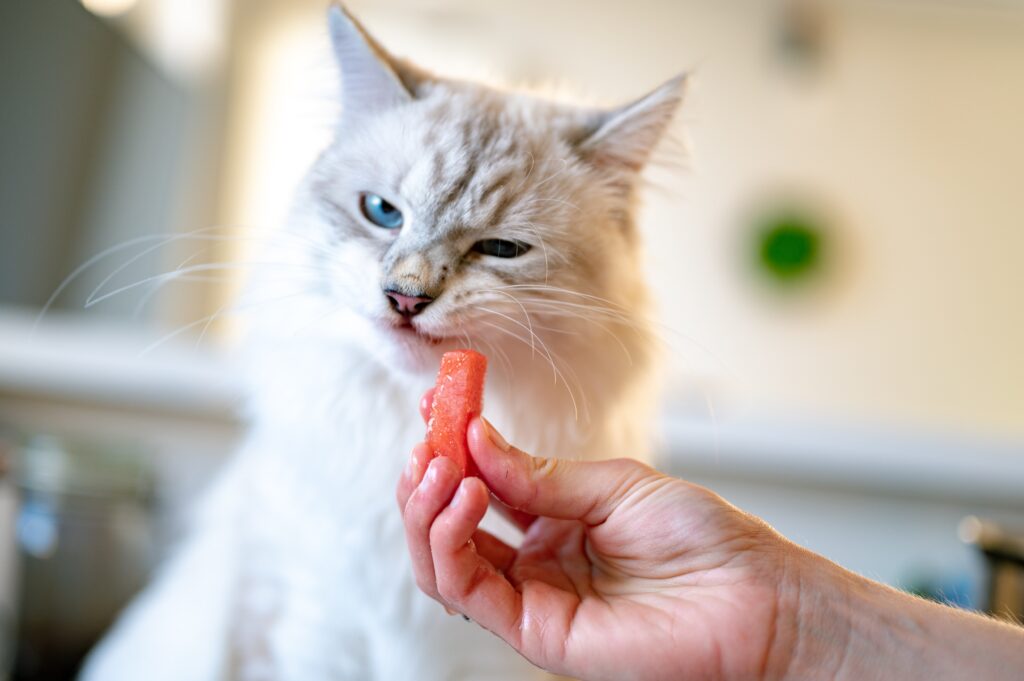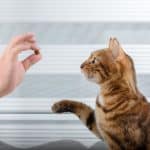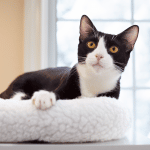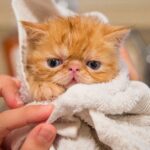Aren’t cats considered members of the family? That might explain why sharing everything with them feels so natural—from our houses to our cuisine. However, cats and people have distinct dietary requirements. So, what human food can cats have? It’s critical to understand what cats require and what they may consume.
What human food can cats have?
Fruits
Cats can consume a variety of fruit as an occasional supplement to their diet, but only in little amounts. This is because fruits are heavy in sugar, so if you feed your feline big quantities, he might become overweight or develop diabetes. Furthermore, always properly wash fruits, cut them into small, readily digestible pieces before serving them to your cat. Also, remove the peel and seeds or any parts that may be difficult to chew and swallow.
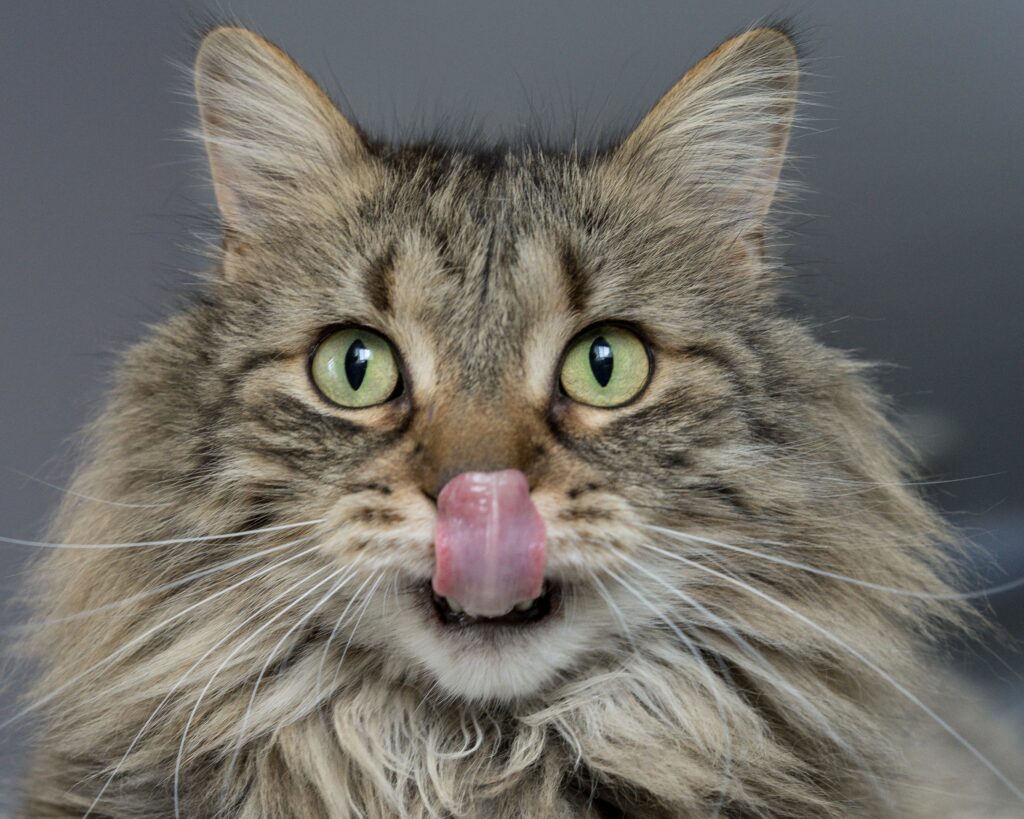
So what human food can cats have in terms of fruit? Here is a list of fruits that are safe for cats.
1. Apples
Vitamins, fiber, and antioxidants are plentiful in apples. In moderate amounts, they can be fed to cats safely. The peel and seeds may contain cyanide, which is poisonous to cats, so don’t let your cat eat them.
2. Cantaloupe
Cantaloupe is one of cat-safe fruits because it is high in antioxidants and beta-carotene, which helps maintain healthy skin and eyes.
3. Watermelon
Watermelon is high in vitamins A, B, C, and potassium, as well as being over 90% water, which helps your pet’s body maintain a healthy water balance. Other melon types, such as cantaloupe and honeydew, are also acceptable for cats to eat. You can feed them little amounts of food as long as the exterior hard skin and seeds are removed.
4. Bananas
Bananas are high in fiber, potassium, and other minerals. However, they’re high in sugar, so just give them in tiny amounts; treats like bananas is known to make up to 10% of your cat’s regular diet.
5. Pears
Pears include vitamins and dietary fiber that protect your cat from infections and cancer, despite their high sugar content. Remove the peel and seeds, then feed it in little portions. The seeds of the pear contain cyanide, which is deadly to cats, similar to the seeds of apples.
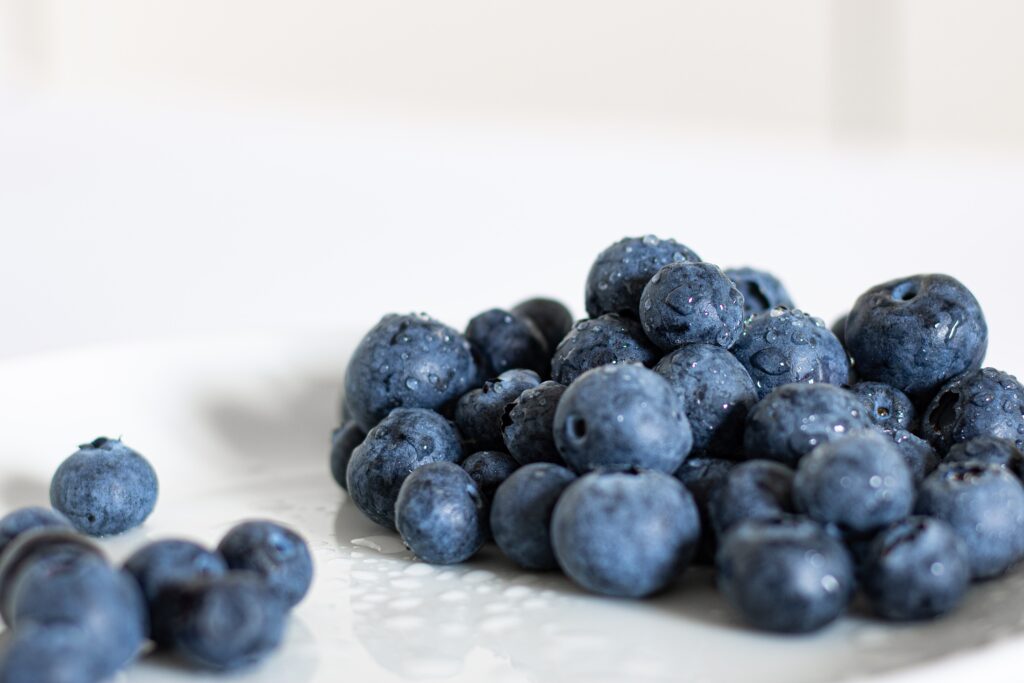
6. Blueberries
What human food can cats have in terms of berries in particular? Blueberries are high in vitamin C and antioxidants, which protect cells from oxidative damage and lower the incidence of urinary tract infections. As a snack or a reward food, blueberries can be given in small amounts.
7. Strawberries
Strawberries can be consumed uncooked, frozen, or pureed by cats. A modest amount of these tasty red fruits can help your kitty’s immune system by providing vitamin C, potassium, and fiber.
8. Raspberries
Raspberries, in addition to being high in dietary fiber and low in sugar, have anti-inflammatory effects, making them an excellent treat for cats, particularly the elderly. However, raspberries are high in xylitol, a natural sweetener that has been linked to pet poisoning. Because raspberries contain very little xylitol, they should be consumed in modest amounts and only on occasion.
9. Cranberries
Cranberries are high in vitamin C, magnesium, and fiber, among other nutrients. You can give your cat cranberries raw or cooked, although cranberry sauce or juice are heavy in sugar and may cause stomach distress.
10. Pineapple
Pineapple is high in vitamins and minerals and is good for the immune system and digestion. However, because this tropical fruit is strong in sugar, it should only be consumed in limited quantities once the peel and hard parts have been removed.
11. Pumpkin
Is it possible for cats to eat pumpkin? Pumpkin is not only low in calories and high in fiber, but it can also be used to cure cats with irregular feces. Pumpkin can be used in cat treats because it is safe as well as healthful.
Beside fruit, what human food cat cats have?
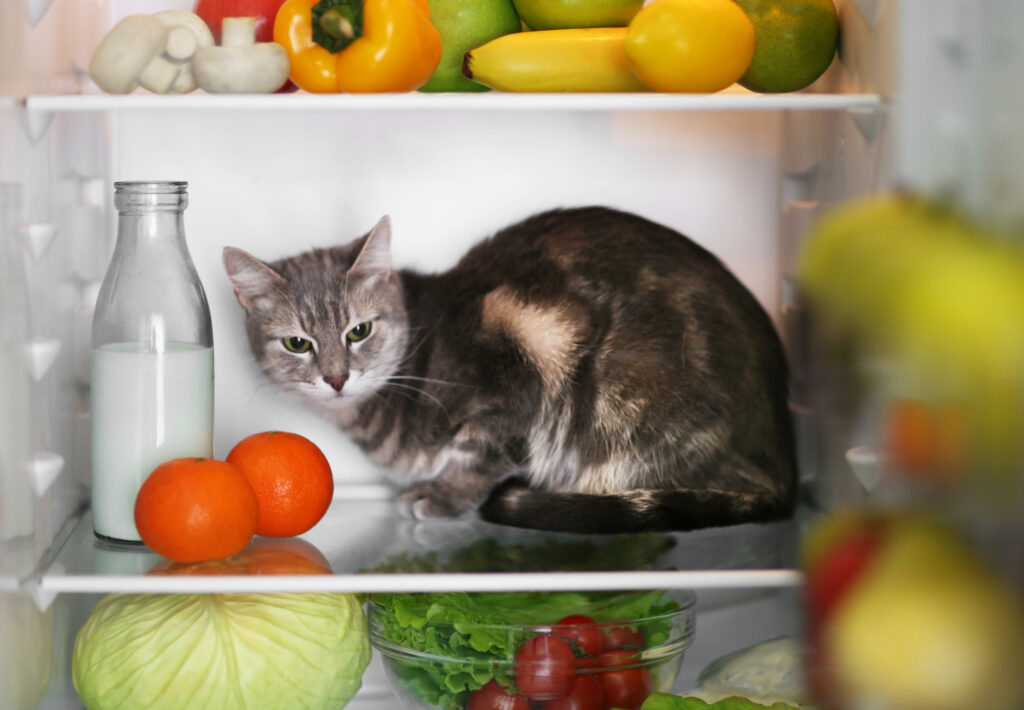
Vegetables
As carnivores, cats acquire all of their nutrients from animal protein. The best way to keep your cat healthy is to provide them a meat-based diet since their digestive systems aren’t built to handle fruits and vegetables.
However, there are some vegetables that can be safely served in little amounts and on occasion (some others are toxic like garlic or onions). Vegetables contain vitamins and minerals that meat lacks. Because of their high water content, low fat content, and low calorie content, they may be especially beneficial for overweight cats. Before adding a new food to your cat’s diet, consult your veterinarian.
Some vegetables that are safe for cats are:
1. Carrots
Beta carotene is abundant in carrots and is beneficial to your cat’s eyes and coat. This orange vegetable can be fed to your pet as long as it is peeled and prepared to decrease the risk of choking.
2. Zucchini
Zucchini is a common ingredient in many commercial cat foods. This is because the magnesium, potassium, and manganese it contains are beneficial to cats.
3. Cucumbers
Cucumber is high in water and contains vitamins C and K, as well as minerals like magnesium, making it an excellent snack for overweight cats. Before giving it to your cat, peel it and chop it into tiny slices.

4. Broccoli
Broccoli is yummy and safe to eat for your cat every now and then. Serve it in small amounts, boiled and unseasoned. It’s quick and easy to make, plus it’s high in antioxidants. Broccoli is also high in roughage, which promotes regular bowel motions and a healthy digestive tract in your cat.
5. Spinach
Spinach is full of vitamins and minerals such as vitamins A, C, and K, calcium, and iron, and can be a healthy, cat-friendly treat. However, you should avoid offering spinach to your cat if they have a history of calcium oxalate bladder stones.
6. Green Beans
Green beans are high in iron and protein and low in calories, making them an excellent choice for overweight cats. A tablespoon of fresh, canned, or frozen beans can be safely added to your pet’s meals. If you’re feeding canned beans, though, make sure they’re sodium-free.
7. Celery
Celery is high in vitamins and fiber, making it ideal for cats suffering from digestive problems. This crunchy vegetable also has diuretic properties and can help your pet’s kidney function. It’s also high in water, so it can be given as a snack or treat to overweight cats on a strict diet.
8. Lettuce
Another type of leafy greens that is safe for cats is lettuce. In addition to vitamins A and K, folate, and fiber, lettuce is low in calories and abundant in water, making it ideal for cats that don’t get enough water from other sources. Before feeding, this green vegetable should be well washed and cut into little pieces.
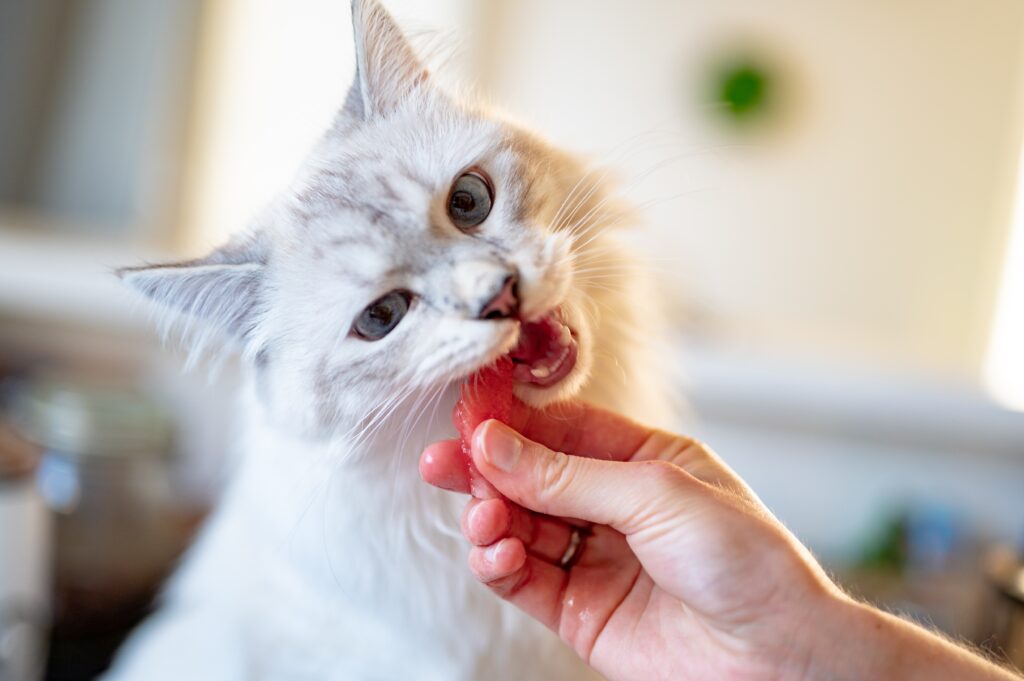
Fish and meat
What human food can cats have? Of course, there’re fish and meat. Here’s the list that is safe for cats.
1. Fish
Vitamins, minerals, and vital fatty acids are all found in fish. Boiling fish, chopped into little pieces, and without seasonings is the finest method to offer it to your cat. Choose fresh-caught fish over farm-raised, and be sure to thoroughly remove the backbone and bones.
2. Shrimp
Phosphorus, calcium, protein, and omega-3 fatty acids are all abundant in shrimp. It’s helpful for your cat’s heart health and can help keep his fur healthy. Cooked shrimp can be included to your pet’s food on occasion, but it should not be a regular part of their diet.
3. Meat
Meat is the main food source for cats, as it is high in animal protein and amino acids. Any form of meat, such as chicken, turkey or pork, can be fed to your cat as long as it’s prepared and offered plain, with no sauces or seasonings and bones removed. When it comes to cooking methods, choose boiled, grilled, or baked meat over fried meat because it includes a lot of fat. Also, make sure the meat is cooked well enough to destroy any viruses or germs that may be present.
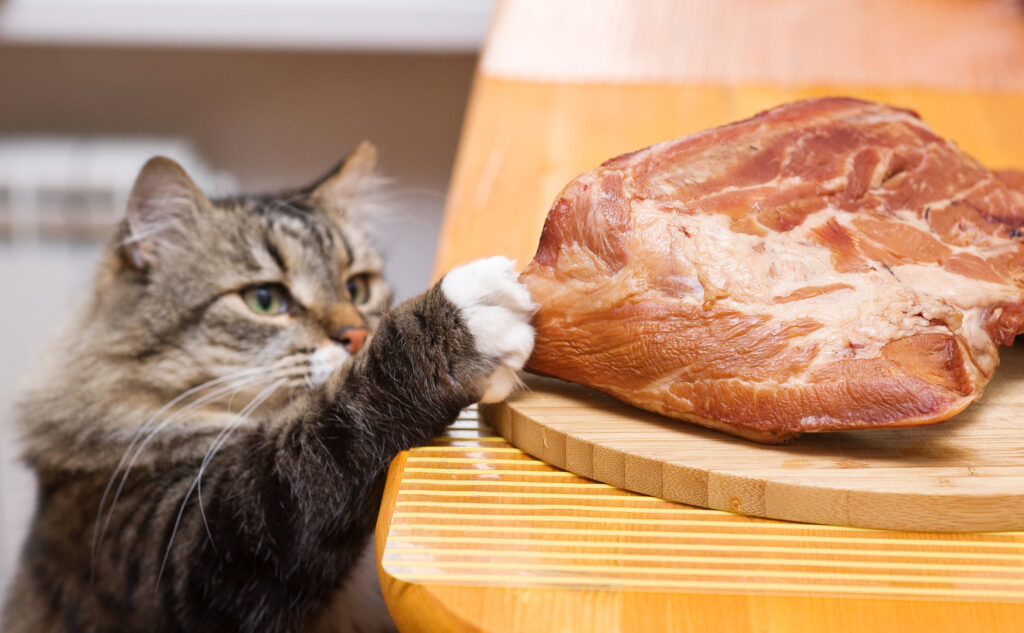
4. Bacon and ham
Because of the high fat and salt content, these types of meat should only be fed in limited amounts and as treats. Make sure they’re cooked thoroughly and sliced into little pieces (around the size of your cat’s kibble).
5. Eggs
Eggs are a great protein source and can be scrambled or boiled for your cats. Raw eggs, which can contain viruses and bacteria like E. Coli and Salmonella, should never be given to your cat.
Grains and Cereals
Cats, like fruits and vegetables, do not require carbohydrate in their diet. Unrefined whole grains and wheat cereals, on the other hand, can provide felines with vitamins, fiber, and iron. However, they should only be served as a special treat and not as a regular occurrence.
1. Oatmeal
This type of grain is abundant in dietary fiber and iron, which are both good for your cat’s health. They can also be applied topically to treat skin problems.
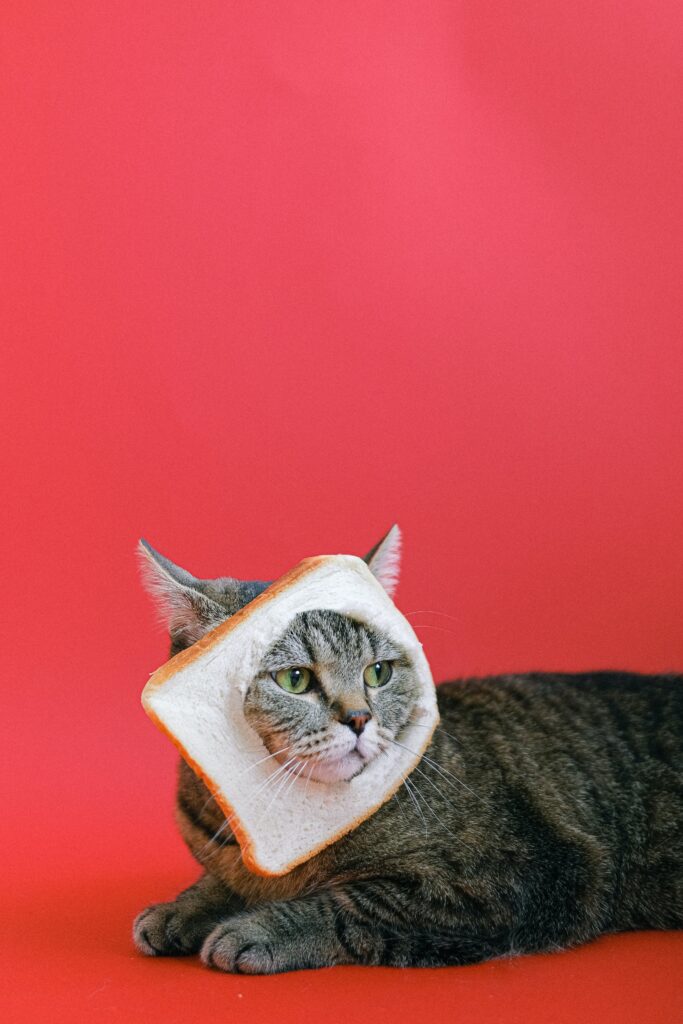
2. Bread
Bread is a rich source of protein and fiber. Some cats enjoy it as a feline-friendly human food.
3. Rice
Rice is okay for cats to eat as a treat if it is cooked thoroughly and provided in little amounts. Rice can benefit cats with diarrhea and gastrointestinal problems due to its high fiber content. It is not, however, part of a feline’s natural diet and is unlikely to provide any nutritional benefits. Cats should not consume grains frequently.
Dairy products
As you might have known by now, cats should not drink milk and use our dairy products in general. However, there’s always exceptions. What human food can cats have when it comes to dairy products? We have the answer right here.
Cheese
Is it possible for cats to eat cheese once in a while? If your cat is especially interested in this food, you can feed her small pieces of a hard cheese such as cheddar, Swiss, or Gouda. These calcium- and protein-rich cheeses can be baked into treats or given to your cat uncooked in modest amounts only to avoid problems for their digestion.
So now you have to answer to one of the common question, “What human food can cats have?” Remember that even safe meals can have unexpected effects, so keep an eye on your pet for indications of gastrointestinal issues (e.g., vomiting, diarrhea) after eating a new food. Introducing only one new meal at a time is also a smart idea. If your cat does start to show indications of disease, you’ll be able to determine the cause of the problem far more simply. Call your veterinarian if you suspect your cat is experiencing an allergic reaction to something on the “safe” list.
Read more about kitten feeding.

